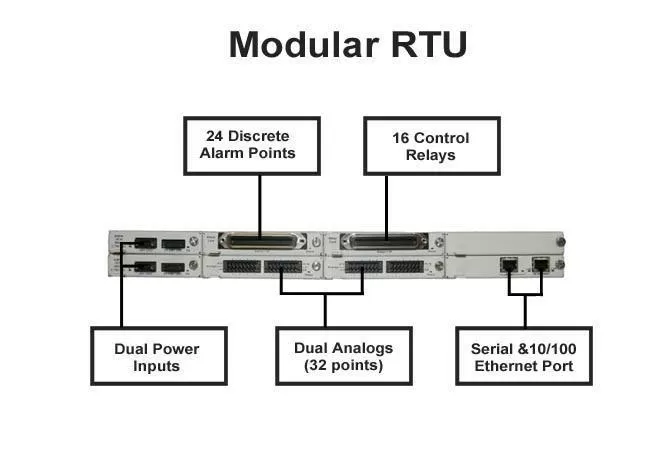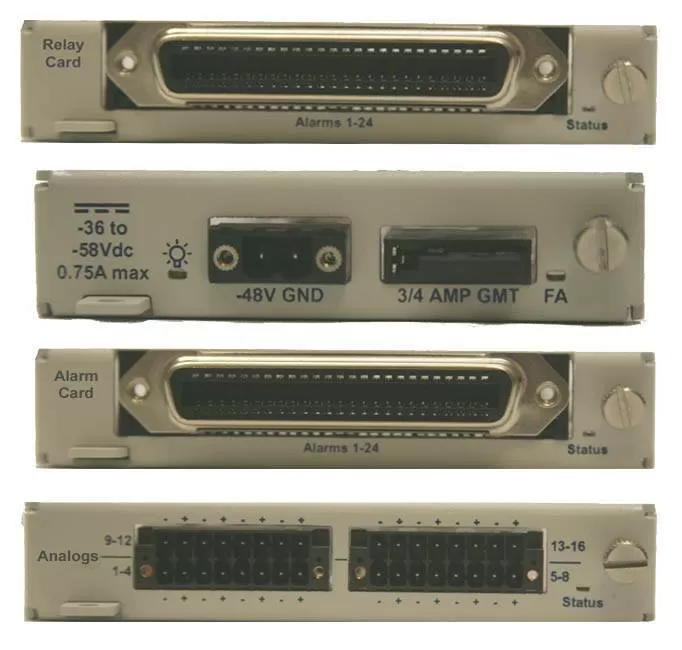Check out our White Paper Series!
A complete library of helpful advice and survival guides for every aspect of system monitoring and control.
1-800-693-0351
Have a specific question? Ask our team of expert engineers and get a specific answer!
Sign up for the next DPS Factory Training!

Whether you're new to our equipment or you've used it for years, DPS factory training is the best way to get more from your monitoring.
Reserve Your Seat TodayWhat you can do with this new modular NetGuardian:
How many times have you said to yourself, "I want to have one type of RTU technology I use at all my sites. I want to have expandability and flexibility with capacities. I want to have the ability to mix and match inputs, outputs, and capabilities." Depending on the site, you might want additional capacity, specialized power inputs, terminal server capability, electronic door control, or a variety of other functions.
This can be a particularly tricky problem, because most RTUs don't have the hardware flexibility to support field upgrades and mix-and-match configurations.
What you need is a way to put everything you need in one RTU. First, you'll save a lot of money by purchasing only what you actually need. Second, in an environment where labor costs for installation can effectively double the cost of a device, installing one box instead of three eliminates huge inefficiencies and preserves budget dollars for your other important projects.

For years, DPS has offered no-cost product customization for small minimum orders (typically, quantity 11 or more). This is an excellent way to slash your equipment and installation expenses, and you should never hesitate to send DPS a quick message to tell us what you need in a remote monitoring device.
Still, you might want the additional in-the-field flexibility that's possible with a modular RTU. Such a device would have a chassis with many "open slots" supporting a wide variety of expansion cards. Cards could add discrete alarms, control relays, analog inputs, power inputs supporting various voltages, or just about anything else you might need.
That's why the DPS engineers are putting the finishing touches on the new Modular RTU platform.
The first Modular RTU chassis is 1RU in size and has 8 card slots (1 for a motherboard, 2 for power inputs, and 5 for multi-purpose expansion cards). The second, larger-capacity chassis is a 2RU high-density card shelf that supports 11 cards in vertical slots.
Several expansion cards have already been developed for the launch of the Modular RTU, and others are planned for the near future. Remember that you may install several expansion cards in the 1 RTU chassis.

Your expansion card options include:
These expansion cards slide into the back of the chassis and lock in place with a simple screw. Because cards slide into connector slots with routing to the motherboard, you'll never have to internally wire-wrap cards during installs, upgrades, or maintenance. Just slide in the card and secure to the chassis with the attached screw. Each card rail is chassis-grounded for protection against damage.

Maximum Potential Capacities with a Dedicated Modular RTU
In most situations, you'll probably deploy a Modular RTU with a mix of different expansion cards. It's eye-opening, however, to consider just how much capacity you can get out a modular RTU that's dedicated to a single function and is maxed out with only one type of card:
| (Qty) Card Type | Capacity |
| (5) 420 cards | 100 discrete inputs & 20 control relays |
| (5) Alarm cards | 120 discrete inputs |
| (5) Analog cards | 80 analog inputs |
| (5) Relay cards | 80 dry-contact outputs (Form-C) |
| (5) 4-Port 10/100BaseT Switch cards | 20 10/100 ports |
| (5) Serial port cards | 20 serial terminal server ports |
| (5) Entry-Control-Unit (ECU) cards | Electronic access control for 5 doors |
The front panel of the Modular RTU includes a D-Wire sensor jack where you can attach 10 D-Wire sensors. These sensors, including temperature and humidity sensors, may be daisy-chained with up to 800 feet of total wire length. An on-board ambient temperature sensor is also permanently embedded in the front panel of the Modular RTU.
The front panel also includes a LCD notification screen, an audible alarm speaker, menu navigation buttons, over a dozen status LEDs, and a Craft port for initial unit configuration. The Modular RTU has a standard grounding lug.
To see how the Modular RTU really works with detailed application diagrams, contact DPS at 1-800-693-0351 or sales@dpstele.com. You can also use the quick online form below to send Mac Smith a quick message.
It's very important that you contact DPS soon and share your thoughts about the Modular RTU. As this new RTU nears completion, you have a chance to influence development and get exactly what you need to monitor your network. DPS has over 25 years of experience, but no one knows your network better than you.